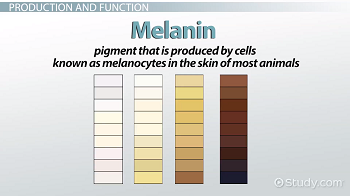MARVELOUS MELANIN

Melanin is for the animal kingdom what chlorophyll is for the vegetable kingdom. Both molecules absorb photons and convert them into useful metabolic energy. But unlike chlorophyll, which is very unstable and lasts only a few seconds outside the leaf, melanin retains its bioelectrical properties outside the body for months, even years.
Melanin (not to be confused with the pituitary hormone melatonin) is a red-brown pigment that gives rise to negroid and other skin color, brown and auburn hair, freckles and age spots, sun tans, and many other hues and tones in our skin and organs. Moreover, there is melanin scattered in parts of the body that are not visible from the surface, such as the retina and brain.

Most animals produce some version of the melanin family and those creatures adept at camouflage, such as the octopus and chameleon, have a large number of melanin-secreting cells on their surface that can rapidly show or hide melanin, so roducing almost instant changes in colors and patterns.
In fact there is a whole range of melanins, such as skin melanin and brain melanin. Fungal melanin is being particularly well studied. Melanins, as a family, are unusual chemicals that are very species-distinctive and difficult to copy. One can always take a molecule from a frog, say a hormone, and manufacture it synthetically. But that is almost impossible to do with a melanin, according to experts.
Comparing melanin taken from the ink sack of a cuttlefish with commercially available synthetic melanins, for example, shows that the natural melanin, as an electrode material, has a specific capacity 50 percent larger than synthetic melanins.

Melanin is remarkable in other ways too: it’s a semiconductor, stable radical, conductor, free radical scavenger, and charge-transfer agent. It protects against many types of radiation and scientists now speculate that organisms that live close to radioactive sources can do so because of their melanin content, which is always enriched in such organisms. For example, fungi that seemed to flourish next to the Chernobyl disaster site all have extra melanin.
Melanin is able to absorb low-energy radiation and throw it back out in enhanced form, releasing metabolically valuable energy. In fact, melanin can convert photo-excited electronic states with an efficiency approaching unity (1:1). It’s so efficient at absorbing UV energies and converting it to usable energy that melanin-based solar technology is now a possibility.